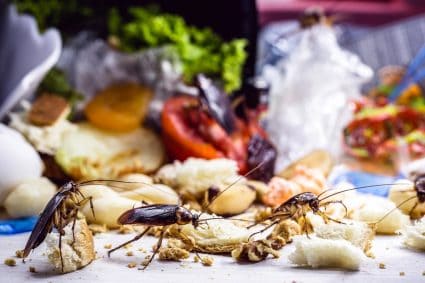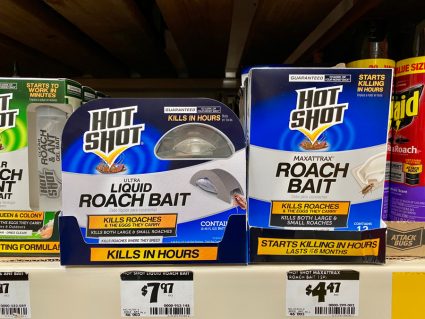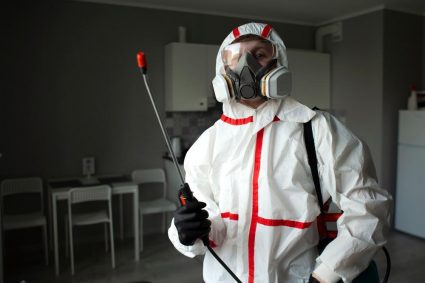
Insects are everywhere, from the deepest forests to the busiest cities. They play vital roles in our ecosystems, from pollinators to decomposers. As part of their life cycle, insects produce droppings, also known as frass, which can tell us a lot about their diet, lifestyle, and even their presence in our surroundings. But what do insect droppings look like? How do they differ among various species? And what can they tell us about the insects themselves? This comprehensive guide will explore these questions and more.
Insect droppings, also known as frass, can vary in size, shape, color, and texture depending on the species. They can range from fine, coarse grains to solid feces shaped like cylinders. The color can be black, brown, or grey, depending on the insect’s diet and species. For example, termite droppings are small, pellet-like, and often look like piles of salt or pepper, while cockroach droppings can resemble ground coffee or black pepper.
Defining Characteristics of Insect Droppings
Insect droppings vary in appearance depending on the species. However, some common characteristics can help you identify them. These include:
- Size and Shape: Insect droppings are generally small and can range from fine, coarse grains to solid feces shaped like cylinders. For example, termite droppings, also known as frass, are 1mm pellets that often look like piles of salt or pepper.
- Color: The color of insect droppings can be black, brown, or grey, depending on the species and the material they have consumed. For instance, cockroach droppings can be brown or black, depending on the species.
- Texture: Insect droppings can have different textures, such as the fine, coarse grains left behind by smaller roaches or the solid feces produced by larger roaches. Termite droppings have six sides, which distinguishes them from sawdust or other debris.
- Location: Insect droppings are often found near their nesting or feeding areas. For example, termite droppings are pushed out of exit holes in the nest, creating pile-ups. Similarly, cockroach droppings can be found in areas where they congregate, helping you identify their hiding spots.
Identifying Insect Droppings
Identifying insect droppings is essential for determining the type of infestation and implementing targeted control strategies to prevent further damage to your property and reduce health risks.
- Cockroach Droppings: Droppings from small cockroaches resemble ground coffee or black pepper, while larger roaches leave behind dark, cylindrical droppings with blunt ends and ridges down the side.
- Termite Droppings: Drywood termite droppings, also known as frass or pellets, are oval-shaped and look like grains of sand, ground pepper, or sawdust. Their color can vary from black, brown, to grey, depending on the wood eaten by termites.
- Ant Droppings: Ant droppings are small and pellet-shaped, with either a beige or black appearance.
- Fly Droppings: Fly droppings are small, dark, and liquid-like, often found on surfaces where they have landed.
Health Risks Associated with Insect Droppings
Insect and rodent droppings can pose various health risks, including allergic reactions, asthma, respiratory diseases, and infections. Some of the diseases and infections associated with insect and rodent droppings include histoplasmosis (from bat guano), hantavirus and arenavirus (from rodent droppings), salmonella and dysentery (from cockroach and rodent droppings), and cryptococcosis and histoplasmosis (from bird droppings).
To mitigate these health risks, it is essential to maintain proper sanitation and pest control measures. These include removing food sources, sealing any gaps around windows and doors, storing trash in containers with lids, regularly cleaning your home, and using a bleach solution or a general-purpose household disinfectant to clean the area when cleaning up rodent droppings.
Insect Droppings in the Ecosystem
Insect droppings play a crucial role in maintaining the health and balance of ecosystems. They contribute to the breakdown and recycling of organic matter, unlocking nutrients that would otherwise stagnate in dung, dead plants, and carrion. Some insects, like the pine weevil, deposit feces adjacent to each feeding site as a deterrent to enemies.
Studying Insect Droppings
Scientists study insect droppings using various methods, including DNA metabarcoding and morphological analysis. These analyses can provide information about the insect’s diet, the presence of pathogens or parasites, and other aspects of their biology and ecology.
Conclusion
Insect droppings provide a wealth of information about the insects themselves and their interactions with the environment. By studying insect droppings, we can better understand these fascinating creatures and the vital roles they play in our ecosystems. Whether you’re a homeowner dealing with a pest infestation or a scientist studying insect ecology, insect droppings offer valuable insights that can guide our actions and decisions.
Frequently Asked Questions
What is the purpose of insects producing droppings?
Just like humans and other animals, insects produce droppings as a way to eliminate waste from their bodies. This waste is a byproduct of the food they consume. Insects can’t digest all the substances in their food, so they excrete the undigested parts as droppings.
What is the difference between insect droppings and bird droppings?
Insect droppings, or frass, are usually solid, small, and can take on various forms depending on the insect species. They are often found close to the insect’s feeding or nesting areas. On the other hand, bird droppings are usually a combination of their feces and urine, appearing as white and black or grey splatters.
Are insect droppings dangerous to touch?
While most insect droppings are not harmful if touched, they can potentially carry diseases or cause allergic reactions. Therefore, it’s recommended to use gloves or a tool to handle insect droppings, especially if you’re uncertain about the type of insect that produced them.
Can insect droppings damage my property?
Yes, certain types of insect droppings can cause damage to your property. For example, termite droppings are a sign of termite activity, which can lead to structural damage in your property if left unchecked.
How can I prevent insects from infesting my home?
There are several ways to prevent insect infestations. These include maintaining cleanliness, sealing cracks and gaps in your home, removing potential food sources, and using insect repellents or pesticides when necessary. Regular inspections by pest control professionals can also help detect and prevent infestations.











